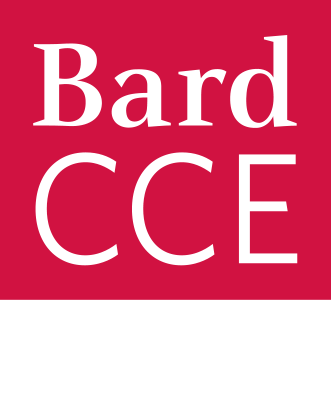The Creation of Bard’s Sugar Shack
The community gathered at the Sugar Shack over family weekend for cider and syrup making.
The seed for Bard’s Sugar Shack was planted years before the first beam went up. “When I started working for Bard Farm in 2019,” recalls Rebecca Yoshino, Bard Farm Manager and Educator, “maple sugaring wasn’t part of our seasonal activities.” That changed in 2021, when Tim McNerney, a Bard parent with fond memories of sugaring with his own child, offered to donate an evaporator and all the supplies needed to start making syrup on campus.
“Really, no education is complete without knowledge in the foundations of our food system,” McNerney reflects. “Everything else in our civilization is built around that.” His gift included sap buckets, taps, hydrometers, and bottling equipment, everything Bard Farm needed to start boiling sap into syrup.
For a few seasons, Bard Farm students collected sap and boiled it outdoors. But when their first evaporator broke down after a batch of syrup burned in 2024, it seemed like the end of the project. That’s when McNerney stepped in again, offering not only a new evaporator but a sugar shack kit to house it. “It just didn’t make sense not to get a sugar shack to put the evaporator in,” he says. “Might as well take care of it, make it fun to hang out as a communal experience and a classroom.”
With the equipment and kit secured, the next step was finding someone who could make it all happen. That’s where Paul Marienthal, Dean for Social Action and Director of Bard’s Trustee Leader Scholar (TLS) program, came in. “When Rebecca asked us to build the sugar shack, I thought it was a perfect-sized project for the Builders Guild,” he says.
Marienthal founded the Builders Guild as part of TLS, a summer program where Bard students gain practical skills while improving the campus landscape. “During the summers, I hire students who are not trained carpenters, and we build bridges, walkways, and trails,” he explains. “When the sugar shack came up, it was exactly the kind of hands-on project that connects students with the physical world.” The construction team included student carpenters Mac Vitiello, Semuel Lala, and Eamon Brannigan, who worked on the roof and cupola, and painters Asher Henry and Julian Donas Milstein.
They were joined by Mike Clum, who maintains Montgomery Place and helped with grading and concrete work, and Andy Anderson, Bard’s Director of Grounds, who delivered supplies and provided guidance. Yoshino coordinated with Buildings and Grounds and oversaw the complex approval process, which involved Bard College, the Town of Red Hook, and Scenic Hudson due to the site’s proximity to a conservation easement.
“There were many heads, hands, and hearts that made this possible,” Yoshino says. “It’s all been rooted in community engagement and education.”
When the Sugar Shack finally opened its doors, it drew people in immediately. “Almost 100 people showed up to make apple syrup at Family Weekend,” Marienthal recalls. “Everyone was involved, from kids to grandparents. It was exactly what Rebecca envisioned.”
For Yoshino, the project has expanded Bard Farm’s reach both within and beyond the Bard community. “It will allow us to conduct sugaring in an accessible space for all abilities,” she says. “It also helps connect Bard and Simon’s Rock campuses, and it provides a home for workshops and events, like the apple syrup making and, soon, natural dye workshops.”
McNerney’s story of sugaring began long before Bard’s involvement. “I grew up with a father who was always looking for projects to do with his kids,” he shares. “Everything was an opportunity to learn.” He passed that same hands-on spirit on to his child, Sofia, then a young tinkerer who loved working with tools and growing things. “That kid loved anything that grew,” he says. “Once, she dug up a pile of Jerusalem artichokes and shouted, ‘This is like digging up gold!’”
That same love of discovery lives on in the Sugar Shack. “Everyone should participate in taking care of the environment,” says Marienthal. “Picking apples, tapping trees, these are labor-intensive and fabulous work experiences. It’s all about sharing the work of making the world. And we get maple syrup at the end. What could be better?”
The Sugar Shack’s next big season begins in February, when students and staff will gather again to tap trees and boil sap into syrup. Yoshino plans to expand programming throughout the year, with workshops on natural dyeing and other sustainable crafts.
For Marienthal, the project embodies what Bard does best: turning student energy into community transformation. His advice to students with their own big ideas? “Be bold. Speak up. Make it happen.”
As for McNerney, who’s currently crossing the Arctic Circle with pints of syrup in tow, the Sugar Shack stands as a tangible reminder of something simple but profound: when people share curiosity, hard work, and care for the land, good things, like maple syrup, flow naturally.
Post Date: 11-14-2025
